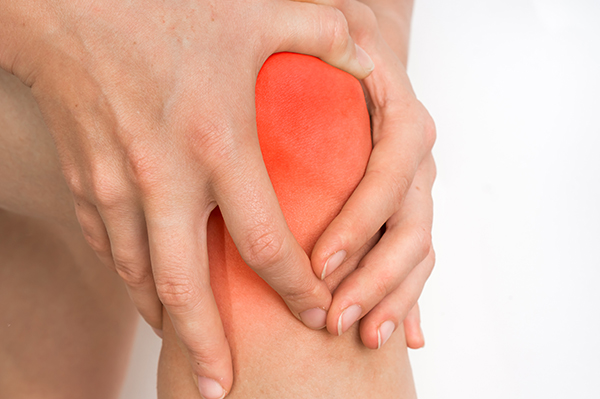The arthritis and joint pain that afflicts obese people may not be due to overstressed joints, as is often assumed. Instead, the real cause of obesity-associated joint overload may be inflammation—body-wide inflammation driven by the microbes that thrive in the guts of obese people.
An even more fundamental cause may be an unbalanced diet, one so rich in fats that it unbalances the gut microbiome. Yet a high-fat diet’s joint-degrading effects may be lessened if a prebiotic supplement is consumed.
The inflammatory connection between the gut microbiome and obesity-associated osteoarthritis (OA) was clarified by scientists based at the University of Rochester Medical Center (URMC). These scientists found that obese mice had more harmful bacteria in their guts compared to lean mice, which caused inflammation throughout their bodies, leading to very rapid joint deterioration. While a common prebiotic supplement did not help the mice shed weight, it completely reversed other symptoms, making the guts and joints of obese mice indistinguishable from lean mice.
Detailed results appeared April 19 in JCI Insight, in an article entitled “Targeting the Gut Microbiome to Treat the Osteoarthritis of Obesity.” This article reports that oligofructose, a nondigestible prebiotic fiber, can restore a lean gut microbial community profile in the context of obesity. Moreover, the article offers evidence that prebiotics could be means of treating the OA of obesity.
“Compared with the lean murine gut, obesity is associated with loss of beneficial Bifidobacteria, while key proinflammatory species gain in abundance,” the article’s authors wrote. “A downstream systemic inflammatory signature culminates with macrophage migration to the synovium and accelerated knee OA. Oligofructose supplementation restores the lean gut microbiome in obese mice, in part, by supporting key commensal microflora, particularly Bifidobacterium pseudolongum. This is associated with reduced inflammation in the colon, circulation, and knee and protection from OA.”
The URMC team, led by Michael Zuscik, Ph.D., essentially fed mice a high-fat diet akin to a Western “cheeseburger and milkshake” diet. After just 12 weeks of the high-fat diet, experimental mice became obese and diabetic, nearly doubling their body fat percentage compared to control mice, which were fed a low-fat, healthy diet. The colons of the obese mice were dominated by proinflammatory bacteria, and almost completely lacked Bifidobacteria, the beneficial probiotic bacteria.
The changes in the gut microbiomes of the mice coincided with signs of body-wide inflammation, including in their knees where the researchers induced OA with a meniscal tear, a common athletic injury known to cause OA. Compared to lean mice, OA progressed much more quickly in the obese mice, with nearly all their cartilage disappearing within 12 weeks of the tear.
“Cartilage is both a cushion and lubricant, supporting friction-free joint movements,” said Dr. Zuscik. “When you lose that, it's bone on bone, rock on rock. It's the end of the line, and you must replace the whole joint.”
Surprisingly, the effects of obesity on gut bacteria, inflammation, and OA were completely prevented when the high-fat diet of obese mice was supplemented with the prebiotic. Prebiotics cannot be digested by rodents or humans, but they are welcome treats for certain types of beneficial gut bacteria, like Bifidobacteria. Colonies of those bacteria chowed down and grew, taking over the guts of obese mice and crowding out bad actors, like proinflammatory bacteria. This, in turn, decreased systemic inflammation and slowed cartilage breakdown in the mice's OA knees.
Oligofructose even made the obese mice less diabetic, but there was one thing the dietary supplement didn't change: body weight.
Obese mice who were given oligofructose remained obese, bearing the same load on their joints, yet their joints were healthier. Just reducing inflammation was enough to protect joint cartilage from degeneration, supporting the idea that inflammation—not biomechanical forces—drive OA and joint degeneration.
“Deeper study of the give and take between microbial abundance in the context of obesity and under the influence of oligofructose is warranted,” the article’s authors discussed. “Particular focus on the possible influence of the metabolic and transcriptomic signatures of dominant species that could be impacting host immune system function and overall physiology in ways that have not been previously understood is an important future direction.”
Though there are parallels between mouse and human microbiomes, the bacteria that protected mice from obesity-related OA may differ from the bacteria that could help humans. The URMC scientists aim to collaborate with researchers in the Military and Veteran Microbiome: Consortium for Research and Education at the U.S. Department of Veteran's Affairs to move this research into humans.
The team hopes to compare veterans who have obesity-related OA to those who don't to further identify the connections between gut microbes and joint health. They also hope to test whether prebiotic or probiotic supplements that shape the gut microbiome can have similar effects in vets suffering from OA as they did in mice.







